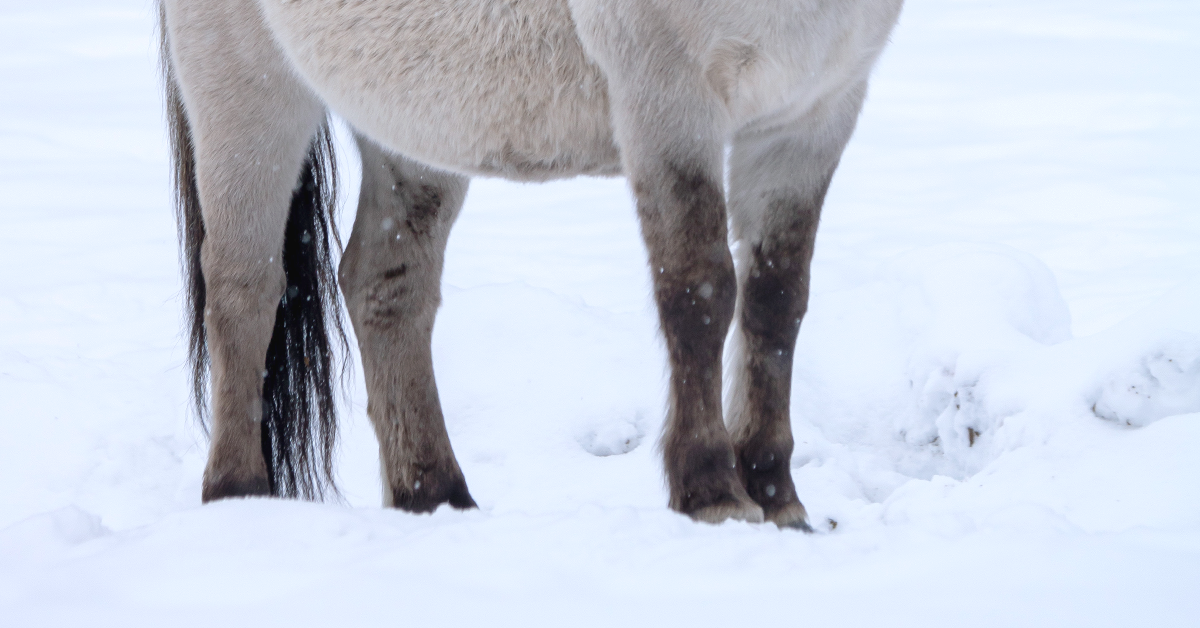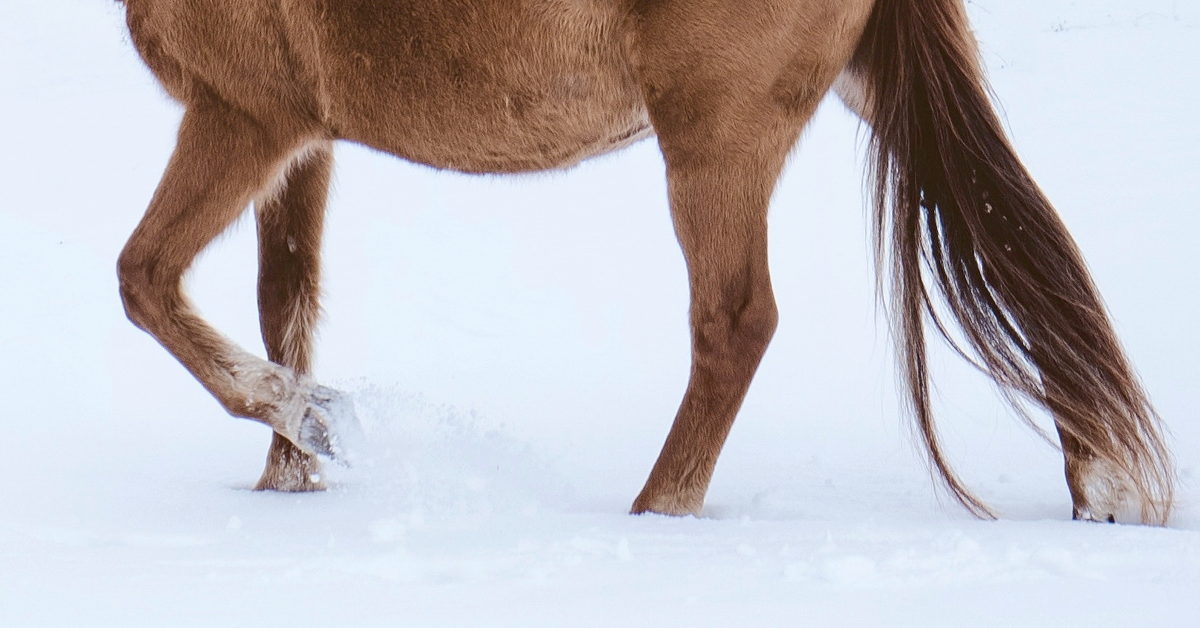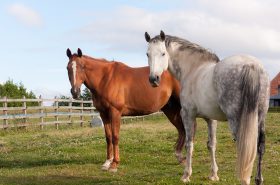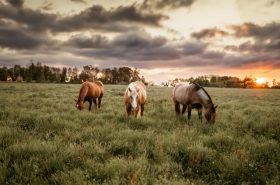When we think of laminitis, we may think of horses grazing on lush, spring grass or accidentally gaining access to the grain bin. However, laminitis can actually occur all year long, including in the winter. In this case, it’s the same disease process, only with different triggering factors.

Signs & Risk Factors
A horse with acute laminitis will be noticeably (and often severely) lame, may stand in a “sawhorse” stance, and is often reluctant to move. They may also have an increased digital pulse. One interesting thing to note, however, is that there is a lack of heat in the foot. Additionally, the sinking or rotation of the coffin bone rarely occurs.
Horses that are prone to this winter condition often have a history of prior episodes or at the very least, have suspected or diagnosed insulin resistance (IR) or equine metabolic syndrome (EMS).
One reason why at-risk horses can develop laminitis in the winter is that they may already have damage to the vascular supply in their feet. When exposed to cold weather, this further limits circulation to the extremities. Cold weather can also cause the stress hormone, cortisol, to rise which can affect circulation to the hooves as well. For horses with metabolic issues, this can lead to laminitis.
Unfortunately, horses with the condition do not respond to anti-inflammatory drugs like Bute, which is often used with the usual form of laminitis. Instead, management and dietary changes will need to be made.

Tips for Preventing and Treating Winter Laminitis
To both prevent winter laminitis in susceptible horses and also treat the condition, you will need to focus on dietary management and increasing circulation to your horse’s feet. This means, feeding a diet that is low in nonstructural carbohydrates and doing what you can to keep the lower limbs warm. Using lined hoof boots, shipping wraps, or other types of leg wraps can help to keep the lower limbs warm and increase circulation. Horses with the condition may need to be blanketed as well.
Adding certain supplements to your horse’s diet can also be helpful in both treatment and prevention. Equine veterinarian, Dr. Eleanor Kellon, recommends feeding an adaptogenic herb such as Jiaogulan, North American Ginseng, Eleutherococcus, Rhodiola, or Schizandra. She also recommends the amino acid, L-arginine since it aids with nitric oxide production and supports healthy blood flow.
If you suspect your horse needs treatment, contact your veterinarian as soon as possible to discuss a plan.
Sources:
- Seasonal Soundness: Avoiding Winter Laminitis in Horses
- Understanding and Managing Winter Laminitis
- Winter Laminitis in Horses: Causes, Symptoms & Treatment [Overview]
Love this blog post? We think you will like What Is Nutritionally Induced Laminitis by Emily Griffin.



